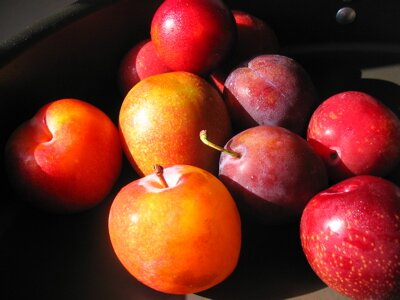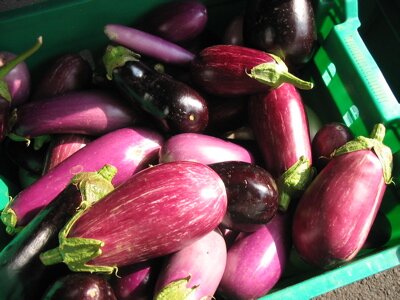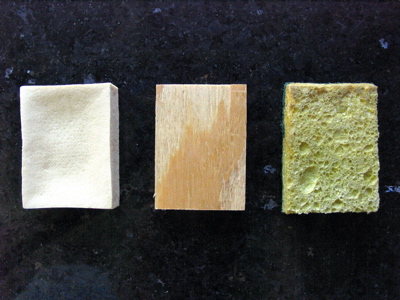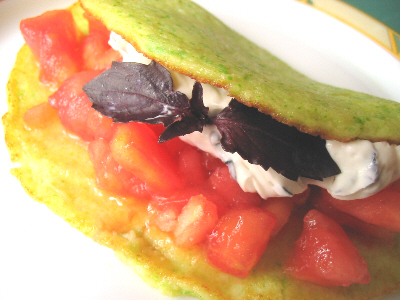how to feed a foreigner
It’s funny what people remember. Somehow, in the last few years, I’ve acquired a reputation of a coffee addict. It’s not undeserved, mind you, but compared to other peoples caffeine addictions mine is really quite mild: a cup of coffee a day, preferably in the mornings, and I politely decline offers of more except in emergencies. I even manage not to be cranky if my morning coffee is delayed. Sometimes. Nonetheless, one of the first things Helena said to me, with a degree of concern, in a taxi from the airport was: “You must be dying for coffee.” And I was, and off we went as soon as I dropped off my bags, and so began my tour of Budapest.
I had never before seen so little of a city I came to visit. Sure enough, there was the Buda castle, a visit to St. Stefan and St. Mattias cathedrals and the Budapest Synagogue, and even an obligatory visit to the Heroes Square and an art museum. But mostly I saw the insides of coffeeshops, Helenas kitchen, and her parents’ lovely house in the suburbs - where the kitchen was the exclusive realm of Helenas mother and I respectfully stood aside. Mrs. T is a marvelous and enthusiastic cook, but before we get into the subtleties of Hungarian cuisine I should get two things out of the way: paprika and goulash. Because that’s what you are already thinking about.
Buying paprika in Hungary is serious business. You have lots of choices: sweet or hot, fresh or dried, whole or ground up to different degrees of fineness, and from one of the two growing regions that produce distinct varieties. Fresh and whole dried are best bought at a farmers market - there are several of them in the city, housed in permanent pavillions and selling everything from pigs’ ears to butternut squash. Even in the middle of winter, the quality of fresh peppers was astounding - I ate a sweet red capsicum raw, thinking of July and Union Square greenmarket, and, accidentally, a piece of harmless looking light-green bell pepper that turned out to be quite quite hot. If you speak German, youll be able to ask what you are getting - for the older generation of Hungarians a German is a default foreigner and many speak the language.
Green hot peppers don’t seem to be dried, but red hot peppers are dried and sold whole, tied with pieces of string hung in magnificent rows over the vegetable stalls. They are handled very gingerly. A dried pepper would be crushed with the back of a spoon and served in a small dish to be added to soup or stew - also with a spoon, for the oils that get on your skin can come to haunt you long after the meal, when you forget all about the peppers and decide to rub your eye. The peppers are, in fact, surprisingly hot. A couple of small flakes dropped into a bowl of soup transformed it in a few seconds, and continued doing so until I decided to fish them back out. I was also shooed away from the table before desert to wash my hands, since I did pick up the flakes with my fingers.
Ground paprika can also be hot - it is then labeled scipos or eros. Sweet ground paprika is labeled scipossegmentes (mild) or edesnemes (sweet), or both. According to my Hungarian hosts youll want a pack that also says orlemeny (special, referring to paprika of particularly high quality). Paprika comes from two growing regions: Kalosca and Szeged, and according to my hosts, the stuff from Kalosca is more brightly red and more reliably good. I have packets of both and cannot tell the difference in taste or color, but paprika’s flavor really comes out in cooking, so who knows.
Sweet paprika is really present in just about everything, and together with onions and lard forms an essential part of a Hungarian flavor base. Ground, its a delicate spice and must not be overheated, or it may turn bitter. It does, however, need fat to release most of its goodness. In soups, it’s stirred in close to the end of cooking. In stews, it’s sprinked over the already browned meat, which is then taken immediately off heat (one can then add a liquid and begin braising - the gentle temperature of a braise will do no harm). Such is the method used in goulash - which is officially a soup, although the line between a soup and a stew can be fine indeed.
I did not have a homemade goulash on the trip, although I did get my host’s recipe - Christmas and New Years is not a time for goulash; families tend to cook pork and more elaborate holiday dishes (and fish on Christmas Eve, which is a day of fasting - even though its hard to tell by the quantity of food that is served). I did have a big bowl of goulash nonetheless, in a bistro-style eatery on a frosty day after touring the Buda castle. Its a very simple thing, really - beef, and broth, and root vegetables, and paprika for color and flavor, and maybe some caraway seeds and black peppercorns - and marvelous on a cold day. More complex recipes, including the one in the Joy of Cooking, seem to me to miss the point - perhaps in an attempt to mask the weak flavors of American vegetables and paprika alike.








